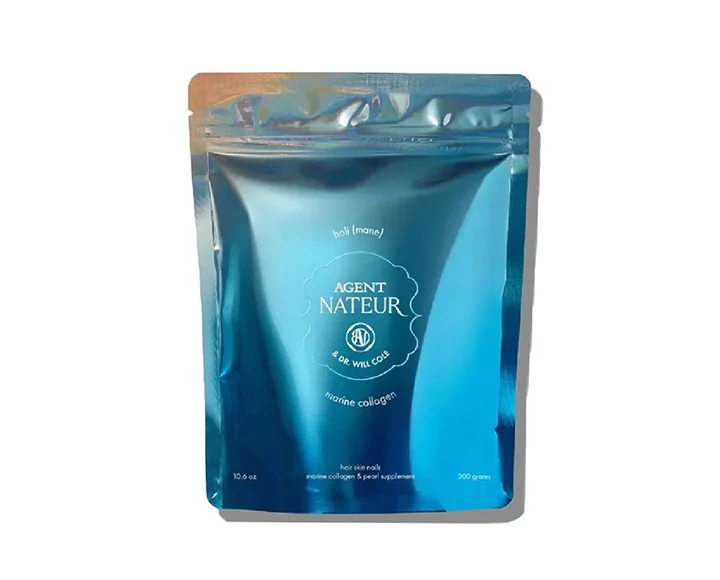One of the greatest mysteries of the modern world is this: what the heck goes into “fragrance”? The equally ubiquitous and completely mysterious category of ingredients is one of the least regulated out there. Toxic chemicals can sneak in unnoticed — and stay there, unreported — as there isn’t much being done on the legislation front to prevent it.
We’re thrilled there are more brands clarifying their use of all natural fragrance, but so many still need to come clean. That’s why it’s important to know what to look for and why. Beth Conway is the Communications Director at Women’s Voices for the Earth (WVE), a national environmental health organization that works to amplify women’s voices to eliminate toxic chemicals that harm our health and communities. Below she’s explaining everything we need to know about fragrance…
When you read the label on a favorite bottle of shampoo you’ll likely see the term fragrance, parfum or perfume in the ingredient list. But these words actually represent a chemical cocktail that can be made up of dozens — sometimes even hundreds — of undisclosed ingredients. Fragrances are found in thousands of consumer products from cosmetics and cleaners, to tampons and toilet paper, yet there is little regulatory oversight of the safety of those ingredients.
In fact, the current system for fragrance safety is run almost entirely by the industry’s own International Fragrance Association (IFRA) and their research arm, the Research Institute for Fragrance Materials (RIFM). Manufacturers of scented products (like that aforementioned favorite bottle of shampoo) largely rely on the fragrance industry to supply them with safe fragrances. But when it comes to safety, the fragrance industry is failing. Big time.
How toxic is fragrance? Very.New data compiled by environmental health organization, Women’s Voices for the Earth (WVE), found that nearly a third of all fragrance chemicals used to make scents that are either known to be toxic or considered potentially toxic by scientists around the world.
“In fragrance ingredients we’re finding phthalates linked to hormone disruption. And styrene, a carcinogen recognized by The International Agency for Research on Cancer, a division of the World Health Organization. Fifteen of the chemicals that are used in fragrance are banned from cosmetics in the European Union,” said Alexandra Scranton, WVE’s Director of Science and Research. “These are chemicals that are prioritized by a number of governmental bodies due to their inherent toxicity — yet these same chemicals have essentially been given the green-light by the fragrance industry.”
This means that the fragrance chemicals manufacturers have to work with are largely toxic. And, as new testing shows, they are ending up in our homes. Breast Cancer Prevention Partners (BCPP) released testing results that clearly revealed the presence of harmful fragrance chemicals linked to cancer, hormone disruption, reproductive harm and respiratory toxicity in a variety of household products.
“Our results found that three out of four of the toxic chemicals in the beauty and personal care products we tested were fragrance chemicals,” said Connie Engel, Ph.D., BCPP Senior Manager of Science Translation. “And most of these toxic chemicals were not found on the product label.”
“BCPP’s product testing confirms that these toxic fragrance chemicals are not just available, they are commonly being used in the products we use everyday,” said WVE’s Scranton. “And the fact companies are allowed to keep such potentially harmful ingredients a secret is absolutely unacceptable.”
How do we change the game? Change the laws.
Currently, no federal law requires the disclosure of fragrance ingredients to consumers, manufacturers or even regulatory agencies. And it is only recently that a first-of-its-kind law passed in California requiring the disclosure of fragrance ingredients in cleaning products. This is a big step forward for disclosure, but when it comes to fragrances used in cosmetics and other personal care products, the public is still largely left in the dark or at the whim of voluntary disclosure from companies aiming to up their transparency game.
A brand new bill introduced by Rep. Jan Schakowsky would ban chemicals linked to cancer and birth defects from retail and professional salon products and require full fragrance disclosure. Over the years there have been a handful of federal cosmetics bills introduced with the goal of righting the sorely outdated 80-year-old cosmetic regulation. But the Safe Cosmetics and Personal Care Products Act of 2018 is the only federal cosmetic safety legislation that would end secret fragrance chemicals.
In the meantime, we can continue to pressure companies to disclose their ingredients. We can call foul on an industry and manufacturers that think it’s okay to use toxic chemicals in products and put public health at risk. Bottom line: Fragrance has received a free pass for far too long. It’s time to raise a stink.
Want to do more? Here’s how.
Read labels to avoid fragrance. Look for the term fragrance, parfum or perfume on ingredient labels. And remember, unscented does not mean fragrance-free. Fragrant chemicals are often used to mask natural scents in so-called unscented products, like deodorant and soap.
Cut down on products. Just by eliminating a single fragrant product from your daily routine (try lotion, detergent, air freshener, shampoo or dryer sheet) means you’re taking important steps to avoid chemicals linked to allergies, hormone imbalance and increased risk of breast cancer.
Contact companies directly. Manufacturers need to hear from the people who buy their products, so call customer service numbers and voice concerns over the safety of fragrance ingredients. Inquire about disclosure policies. And if you don’t like the answers, let them know.
Flex your economic power. You have a massive amount of economic power. Yes, you. You can influence companies to be ingredient transparent and make safer products. Companies pay a lot of attention to what we buy — and what we don’t buy. So use that power.
Educate and engage others. Share this article on social media. Ask your friends if they’ve ever been bothered by someone’s perfume, developed a rash from a lotion or detergent or had issues with asthma. There is power in numbers. You can help double those numbers right now by simply sparking a conversation.
The Chalkboard Mag and its materials are not intended to treat, diagnose, cure or prevent any disease. All material on The Chalkboard Mag is provided for educational purposes only. Always seek the advice of your physician or another qualified healthcare provider for any questions you have regarding a medical condition, and before undertaking any diet, exercise or other health-related programs.













